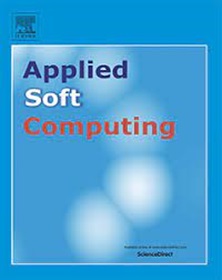基于迁移学习的多目标进化算法在滑动轴承中的应用
IF 7.2
1区 计算机科学
Q1 COMPUTER SCIENCE, ARTIFICIAL INTELLIGENCE
引用次数: 0
摘要
近年来,基于分解的多目标进化算法在解决复杂优化问题方面受到越来越多的关注。然而,现有的权向量自适应方法往往难以平衡多样性和收敛性。为了解决这一问题,我们提出了一种基于迁移学习的多目标进化算法(MOEA/D-TL),该算法集成了联合分布适应(JDA)来协调遗传算子和微分算子产生的种群。MOEA/D-TL的关键创新包括:(1)利用JDA整合两个运营商优势的双运营商框架;(2)利用JDA的特点,利用帕累托优势进行辅助种群标记;(3)稀疏度驱动的自适应权向量调整来细化种群分布。在44个基准问题上的广泛实验表明,MOEA/D-TL优于9个最先进的算法,在三个性能指标上实现了42%-60%的改进。当应用于具有冲突目标(负载能力,热量产生和摩擦系数)的滑动轴承优化时,与其他七种算法相比,MOEA/D-TL产生的解决方案具有更广泛的分布和更高的均匀性。这些结果验证了该算法能够有效地平衡多样性和收敛性。本文章由计算机程序翻译,如有差异,请以英文原文为准。
Application of multi-objective evolutionary algorithm based on transfer learning in sliding bearing
In recent years, decomposition-based multi-objective evolutionary algorithms have gained increasing attention for solving complex optimization problems. However, existing weight vector adaptation methods often struggle to balance diversity and convergence. To address this issue, we propose a multi-objective evolutionary algorithm based on transfer learning (MOEA/D-TL), which integrates joint distribution adaptation (JDA) to coordinate the populations generated by genetic and differential operators. The key innovations of MOEA/D-TL include: (1) a dual-operator framework that leverages JDA to integrate the strengths of both operators; (2) auxiliary population labeling using Pareto dominance, leveraging JDA’s characteristics; and (3) sparsity-driven adaptive weight vector adjustment to refine population distribution. Extensive experiments on 44 benchmark problems demonstrate that MOEA/D-TL outperforms nine state-of-the-art algorithms, achieving a 42%–60% improvement across three performance metrics. When applied to the optimization of sliding bearings with conflicting objectives (load capacity, heat generation, and friction coefficient), MOEA/D-TL yields solutions with broader distribution and improved uniformity compared to seven other algorithms. These results validate the algorithm’s capability to balance diversity and convergence effectively.
求助全文
通过发布文献求助,成功后即可免费获取论文全文。
去求助
来源期刊

Applied Soft Computing
工程技术-计算机:跨学科应用
CiteScore
15.80
自引率
6.90%
发文量
874
审稿时长
10.9 months
期刊介绍:
Applied Soft Computing is an international journal promoting an integrated view of soft computing to solve real life problems.The focus is to publish the highest quality research in application and convergence of the areas of Fuzzy Logic, Neural Networks, Evolutionary Computing, Rough Sets and other similar techniques to address real world complexities.
Applied Soft Computing is a rolling publication: articles are published as soon as the editor-in-chief has accepted them. Therefore, the web site will continuously be updated with new articles and the publication time will be short.
 求助内容:
求助内容: 应助结果提醒方式:
应助结果提醒方式:


